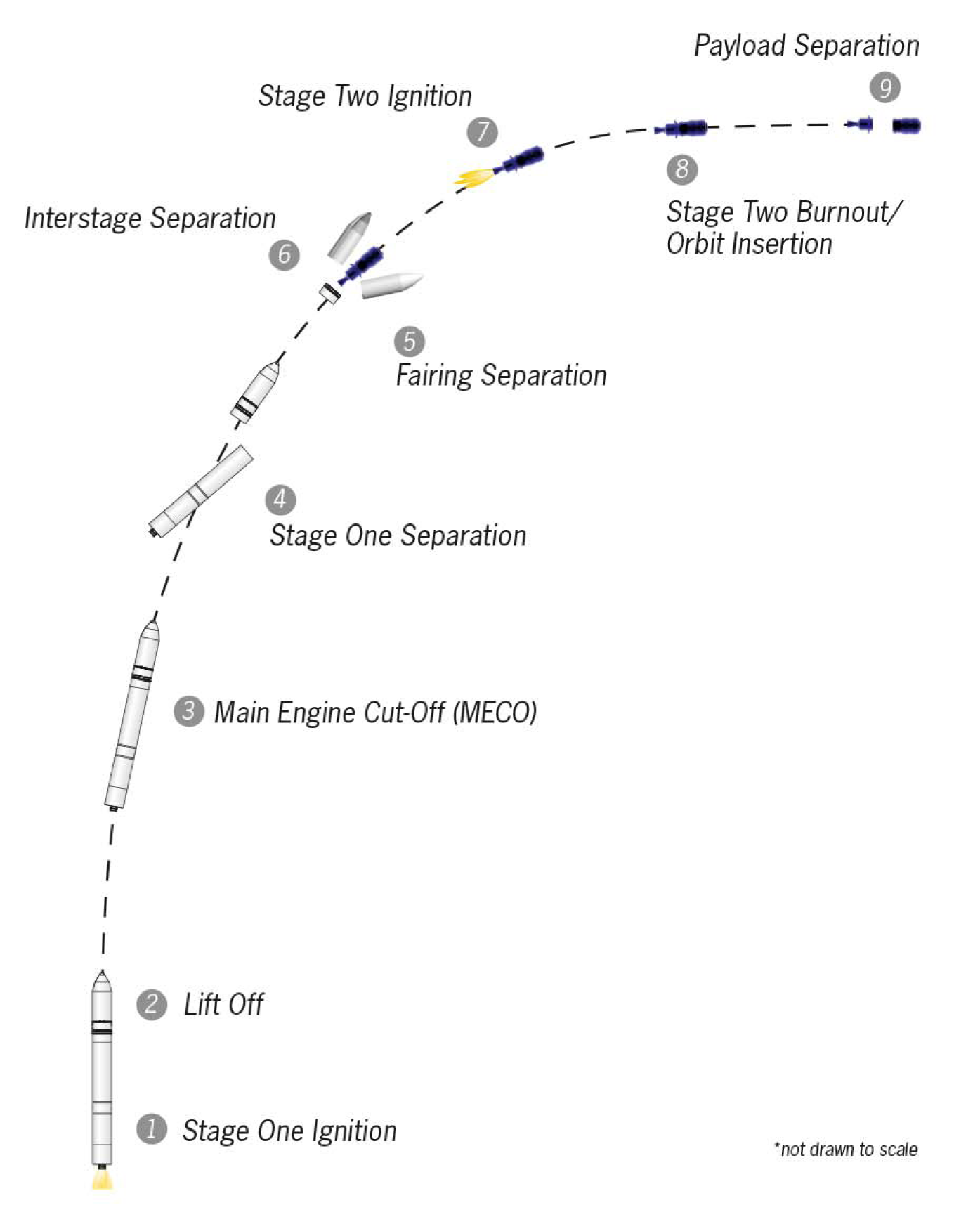Uncontrolled Re-Entries of Satellites | 24 Dec 2022
Prelims: Outer Space Institute, Stages of Rocket launch, ISRO, RISAT-2.
Mains: Uncontrolled Re-Entries of Satellites and Associated Concerns.
Why in News?
Outer Space Institute (OSI) has called for both national and multilateral efforts to restrict uncontrolled re-entries of Satellites.
- OSI is a network of world-leading space experts united by their commitment to highly innovative, transdisciplinary research that addresses grand challenges facing the continued use and exploration of space.
What are the Stages of a Rocket Launch?
- Primary Stage:
- The primary stage of a rocket is the first rocket engine to engage, providing the initial thrust to send the rocket skyward.
- This engine will continue to operate until its fuel is exhausted, at which time it separates from the rocket and falls to the ground.
- Secondary Stage:
- After the primary stage has fallen away, the next rocket engine engages to continue the rocket on its trajectory.
- The second stage has considerably less work to do, since the rocket is already traveling at high speed and the rocket's weight has significantly decreased due to the separation of the first stage.
- If the rocket has additional stages, the process will repeat until the rocket is in space.
- Payload:
- Once the payload, whether it be a satellite or a spacecraft, is in orbit, the rocket’s final stage falls away, and the craft will be maneuvered using smaller rockets whose purpose is to guide the spacecraft. Unlike the main rocket engines, these maneuvering rockets can be used multiple times.
What is Uncontrolled Re-entry?
- In an uncontrolled re-entry, the rocket stage simply falls. Its path down is determined by its shape, angle of descent, air currents and other characteristics.
- It will also disintegrate as it falls. As the smaller pieces fan out, the potential radius of impact will increase on the ground.
- Some pieces burn up entirely while others don’t. But because of the speed at which they’re travelling, debris can be deadly.
- As per a 2021 report of the International Space Safety Foundation, an impact anywhere on an airliner with debris of mass above 300 grams would produce a catastrophic failure, meaning all people on board would be killed.
- Most rocket parts have landed in oceans principally because earth’s surface has more water than land. But many have dropped on land as well.
What are the Concerns?
- There have been many instances in the past where rockets striking some parts on Earth.
- Russian rocket in 2018 and China’s Long March 5B rockets in 2020 and 2022 striking parts of Indonesia, Peru, India and Ivory Coast, among others.
- Parts of a SpaceX Falcon 9 that fell down in Indonesia in 2016 included two “refrigerator-sized fuel tanks”.
- If re-entering stages still hold fuel, atmospheric and terrestrial chemical contamination is another risk.
- It is estimated that casualty risk from uncontrolled rocket body re-entries will be of order of 10% in the next decade” and that countries in the ‘Global South’ face a “disproportionately higher” risk of casualties.
- The U.S. Orbital Debris Mitigation Standard Practices (ODMSP) require all launches to keep the chance of a casualty from a re-entering body to be below 0.01%.
- There is no international binding agreement to ensure rocket stages always perform controlled re-entries nor on the technologies with which to do so.
- The Liability Convention 1972 requires countries to pay for damages, not prevent them.
- These technologies include wing-like attachments, de-orbiting brakes, and extra fuel on the re-entering body, and design changes that minimize debris formation.
What can make Minimum Damage?
- Future solutions need to be extended not just launching satellites but to re-entering satellites as well.
- Advances in electronics and fabrication have made way for smaller satellites, which are easier to build and launch in large numbers. These satellites experience more atmospheric drag than if they had been bigger, but they are also likely to burn up during re-entry.
- India’s 300-kg RISAT-2 satellite re-entered earth’s atmosphere in October after 13 years in low-earth orbit. The ISRO (Indian Space Research Organisation) tracked it with its system for safe and sustainable space operations management from a month beforehand. It plotted its predicted paths using models in-house.
Note
- The Soviet Union launched the first artificial satellite in 1957.
- There are more than 6,000 satellites in orbit, most of them in low-earth (100-2,000 km) and geostationary (35,786 km) orbits, placed there in more than 5,000 launches.
- The number of rocket launches have been surging with the advent of reusable rocket stages.
UPSC Civil Services Examination, Previous Year Questions (PYQs)
Prelims
Q. Satellites used for telecommunication relay are kept in a geostationary orbit. A satellite is said to be in such an orbit when: (2011)
- The orbit is geosynchronous.
- The orbit is circular.
- The orbit lies in the plane of the Earth’s equator.
- The orbit is at an altitude of 22,236 km.
Select the correct answer using the codes given below:
(a) 1, 2 and 3 only
(b) 1, 3 and 4 only
(c) 2 and 4 only
(d) 1, 2, 3 and 4
Ans: (a)
Mains
Q. Discuss India’s achievements in the field of Space Science and Technology. How the application of this technology has helped India in its socio-economic development? (2016)

